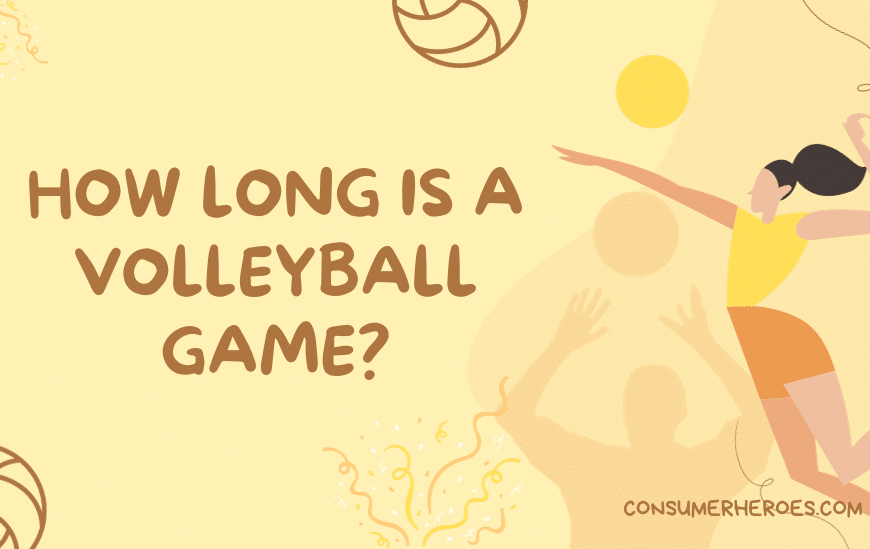An ace in volleyball is a term used to describe a serve that lands on the opponent’s court untouched, resulting in a point for the serving team. It is considered one of the most powerful weapons in a player’s arsenal and can be a game-changer in tight situations. A well-executed ace can shift the momentum of the game and put the serving team in a favorable position.
Aces are not easy to achieve and require a combination of skill, strategy, and luck. A player must have a strong and accurate serve to increase their chances of hitting an ace. The serve must be placed in a strategic location on the opponent’s court, making it difficult for them to return. Aces can also be achieved through a combination of speed and spin, making the ball difficult to read for the opposing team. Overall, a well-executed ace can be a game-changer in volleyball and is a valuable skill for any player to have.
Understanding Volleyball Scoring
In volleyball, points are awarded to a team when they win a rally. A rally is a sequence of plays that start with the serve and end when the ball hits the ground or goes out of bounds. The team that wins the rally is awarded a point, and the serve is then transferred to the other team.
A game of volleyball is typically played to 25 points, and the team that wins the best of five games wins the match. In some cases, a game may be played to 15 points, or the match may be the best of three games instead of five.
It’s important to note that a team must win by two points in order to win a game. If the score is tied at 24-24, the game continues until one team has a two-point lead. This means that a game could potentially go on for several extra points, making it a very exciting and intense sport to watch.
In addition to regular points, there are also bonus points awarded for certain plays. For example, if a team wins a rally off of a block or a serve, they are awarded a bonus point. These bonus points can add up quickly and can make a big difference in the outcome of a game.
Overall, understanding volleyball scoring is important for both players and spectators. By knowing how points are awarded and how games are won, you can better appreciate the strategy and skill that goes into this exciting sport.
Definition of an Ace in Volleyball
In volleyball, an Ace is a serve that lands in the opponent’s court untouched or is passed poorly and cannot be returned. It is a highly desired outcome for the serving team as it results in an immediate point without the need for a rally.
Aces are typically achieved through a combination of speed, accuracy, and spin on the ball. A server may use various serving techniques, such as the jump serve or the float serve, to achieve an Ace. The placement of the serve is also crucial as it can catch the receiving team off guard or force them to make a difficult pass.
Aces are recorded as a separate statistical category in volleyball and are often used as a measure of a player’s serving ability. However, it is important to note that a high number of Aces does not necessarily equate to a strong serving game. A server may also commit a high number of errors or serve into the net while attempting to achieve an Ace.
Overall, Aces are an exciting and valuable outcome in volleyball that can quickly shift the momentum of a game in favor of the serving team.
Importance of an Ace
An ace in volleyball is a serve that lands in the opponent’s court untouched or is touched but unable to be returned. Aces are an important part of the game as they allow the serving team to score a point without the need for a rally. Here are some reasons why aces are important in volleyball:
1. Momentum
Aces can shift the momentum of the game in favor of the serving team. When a player serves an ace, it can demoralize the receiving team and give the serving team a boost of confidence. This can lead to a string of points in a row, which can be crucial in a close game.
2. Pressure
Serving aces can put pressure on the receiving team. The receiving team knows that they need to be ready for a powerful serve, which can cause them to make mistakes or be hesitant in their play. This can give the serving team an advantage and make it easier for them to score points.
3. Control
Aces give the serving team more control over the game. If a team can consistently serve aces, they can dictate the pace of the game and force the receiving team to play on their terms. This can make it difficult for the receiving team to establish their own rhythm and strategy.
In conclusion, aces are an important part of volleyball as they can shift momentum, put pressure on the receiving team, and give the serving team more control over the game. Players who can consistently serve aces are valuable assets to their team and can make a significant impact on the outcome of the game.
Strategies to Score an Ace
Scoring an ace in volleyball can be a game-changer, and it requires a combination of skill, strategy, and a bit of luck. Here are some strategies that players can use to increase their chances of scoring an ace:
1. Serve with Power and Accuracy
To score an ace, a player needs to serve the ball with power and accuracy. This means hitting the ball hard and placing it in a location that is difficult for the opposing team to pass or receive. Players can practice their serves by focusing on their technique, such as getting a good toss, using the correct arm swing, and following through with their body.
2. Change Up the Serve
Another strategy for scoring an ace is to change up the serve. This means varying the type of serve and the location of the serve. For example, a player can switch between a jump serve and a float serve, or they can aim for different spots on the court, such as the corners or the middle of the court. By keeping the opposing team guessing, a player can increase their chances of scoring an ace.
3. Target Weak Passers
If a player knows that a certain player on the opposing team is a weak passer, they can target that player with their serve. By serving to the weak passer, the player can increase their chances of scoring an ace or forcing a bad pass that leads to a point.
4. Use the Element of Surprise
Sometimes, the best way to score an ace is to catch the opposing team off guard. This can be done by using a trick serve, such as a jump float serve or a topspin serve. Players can also use a quick serve, where they serve the ball before the opposing team is ready. By using the element of surprise, a player can increase their chances of scoring an ace.
In conclusion, scoring an ace in volleyball requires a combination of skill, strategy, and a bit of luck. By serving with power and accuracy, changing up the serve, targeting weak passers, and using the element of surprise, players can increase their chances of scoring an ace and helping their team win the game.
Famous Volleyball Players Known for Aces
Aces are an essential component of volleyball, and some players have made a name for themselves by their exceptional serving skills. Here are some of the most famous volleyball players known for their aces:
Karch Kiraly
Karch Kiraly is a legendary volleyball player who is widely regarded as one of the best players in the history of the sport. He was a dominant force in both indoor and beach volleyball, winning three Olympic gold medals and numerous other international titles. Kiraly was known for his powerful jump serve, which often resulted in aces and left his opponents struggling to return the ball.
Gabrielle Reece
Gabrielle Reece is a former professional beach volleyball player who was known for her incredible athleticism and powerful serve. She won numerous tournaments throughout her career and was named the AVP Player of the Year three times. Reece’s serve was a key weapon in her arsenal, and she often used it to score aces and put pressure on her opponents.
Regla Torres
Regla Torres is a retired Cuban volleyball player who is widely regarded as one of the best middle blockers in the history of the sport. She won three Olympic gold medals and numerous other international titles during her career. Torres was known for her exceptional serving skills, and she often scored aces with her jump serve.
Giba
Giba is a retired Brazilian volleyball player who was known for his incredible athleticism and powerful serves. He won two Olympic gold medals and numerous other international titles during his career. Giba’s jump serve was one of the most feared in the sport, and he often scored aces with it.
Logan Tom
Logan Tom is a former American volleyball player who was known for her exceptional skills both on the court and at the service line. She won two Olympic silver medals and numerous other international titles during her career. Tom’s jump serve was one of the best in the sport, and she often scored aces with it.
These are just a few of the many famous volleyball players known for their aces. Their exceptional serving skills helped them to become some of the best players in the history of the sport.
Skills Required for Scoring an Ace
To score an ace in volleyball, a player must have a combination of skills and strategies. Here are some of the essential skills required to score an ace:
1. Serving Technique
The first and most crucial skill required for scoring an ace is serving technique. A player must have a consistent and powerful serve that is difficult for the opponent to receive. The player must be able to serve the ball accurately to the opponent’s weak spots and with enough speed to make it challenging to return.
2. Ball Placement
Another essential skill for scoring an ace is ball placement. A player must be able to place the ball in the right spot to make it difficult for the opponent to receive. This skill requires the player to be aware of the opponent’s positioning and to adjust their serve accordingly.
3. Spin and Movement
Spin and movement are also crucial skills required for scoring an ace. A player must be able to create spin on the ball to make it unpredictable and difficult to receive. They must also be able to create movement on the ball, making it curve or drop suddenly, making it difficult for the opponent to anticipate.
4. Mental Toughness
Finally, mental toughness is a critical skill required for scoring an ace. A player must be able to stay focused and calm under pressure and maintain their technique and strategy throughout the game. They must also be able to adjust their game plan based on the opponent’s strengths and weaknesses.
In conclusion, scoring an ace in volleyball requires a combination of skills and strategies, including serving technique, ball placement, spin and movement, and mental toughness. A player who can master these skills can become a valuable asset to their team and help lead them to victory.
Rules and Regulations Regarding Aces
In volleyball, an ace is a serve that lands in the opponent’s court untouched, resulting in a point for the serving team. Aces are an essential part of the game, and players must follow specific rules and regulations when serving to achieve them.
One of the essential rules regarding aces is that the serve must land within the boundaries of the opponent’s court. If the serve lands outside the court or touches the net, it is considered a fault, and the serving team loses the point.
Another rule is that the server must wait for the referee’s whistle before serving. If the server serves before the whistle, it is considered a fault, and the serving team loses the point.
Additionally, players must rotate their positions on the court before serving. If a player serves out of rotation, it is considered a fault, and the serving team loses the point.
It is also worth noting that there are specific regulations regarding the type of serve that can result in an ace. A jump serve, for example, is a popular serve that can result in an ace, but it requires a specific technique and skill level to execute correctly.
Overall, achieving an ace in volleyball requires skill, precision, and adherence to specific rules and regulations.
How to Improve Your Ace Scoring Ability
Improving your ace scoring ability in volleyball requires a combination of technique, strategy, and practice. Here are a few tips to help you improve your ace scoring ability:
1. Focus on Your Serve Technique
To score an ace, you need to have a good serve technique. This means you need to focus on your footwork, arm swing, and ball toss. Make sure you are using the correct grip on the ball and that your toss is consistent. Practice your serve regularly to improve your technique.
2. Target Weak Spots
To increase your chances of scoring an ace, you need to target the weak spots of the opposing team. Look for players who struggle to receive serves and aim for those areas of the court. You can also try to serve to areas where the opposing team has fewer players.
3. Vary Your Serve
Varying your serve can make it more difficult for the opposing team to receive the ball. Try different types of serves, such as a float serve, jump serve, or topspin serve. Varying your serve can also help you avoid being predictable.
4. Work on Your Timing
Timing is crucial when it comes to serving. You need to make sure you are hitting the ball at the right moment to maximize your power and accuracy. Work on your timing by practicing your serve regularly and getting feedback from your coach or teammates.
By focusing on your technique, targeting weak spots, varying your serve, and working on your timing, you can improve your ace scoring ability in volleyball. With practice and dedication, you can become a more effective server and help your team win more points.
Conclusion
In conclusion, an ace in volleyball is a serve that lands in the opponent’s court untouched, resulting in an immediate point for the serving team. It is a valuable skill in the sport and can greatly impact the outcome of a game.
Aces are often achieved through a combination of power, accuracy, and strategic placement. Players who can consistently serve aces can put pressure on the opposing team and force them to make errors.
However, it is important to note that aces are not the only measure of a successful serve. A well-placed serve that forces the opposing team to make a difficult pass can also be effective, even if it does not result in an ace.
Overall, mastering the skill of serving in volleyball is crucial for any player looking to improve their game. Whether it’s achieving aces or simply putting pressure on the opposing team, a strong serve can make a significant impact on the outcome of a match.







